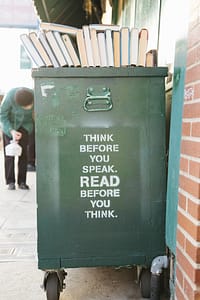Conflict and stakes are the 2 essences of a story because it will make the reader care and engage in our stories, which, in turn, will keep them reading. Without these two elements, there isn’t much of a story, and without a story, there isn’t an audience.
What is conflict in a story?
Conflict are the things that get in the way of achieving a character’s goals. It doesn’t necessarily mean a physical fight. It can mean disagreement between one or more persons. As important as conflict is to a story, it’s important not to contrive conflict just because you read it on a blog somewhere *ahem*. It needs to be relevant the character and plot.
There are 3 types of conflict
1. Overall story conflict
This is the summary of what your story is about – the blurb at the back of your book. For example, in Harry Potter, the overall story conflict is Harry’s struggle against Lord Voldemort. If Harry Potter fails in his mission, Lord Voldemort will overthrow the Ministry of Magic and rule over all wizards and Muggles. If the overall story does not have a viable conflict premise, the chances are that the reader will not be interested enough to read the book in the first place.
2. Character conflict
This is the struggles and challenges each character have between each other (e.g., protagonist vs antagonist, interpersonal drama), which often leads to internal conflict that a character needs to confront / wrestles with, such as guilt, jealousy, or ethical dilemmas. The main character usually has conflict with everyone; allies and enemies alike.
3. Scene level conflict
This is the inherent conflict of the scene where the goal of one or more persons do not align with another. As an example, a teenager is caught stealing in a newsagency by the storekeeper. Here, the scene level conflict is that teenager wants to get something for free, but the storekeeper wants to apprehend him to teach him a lesson. The reader would be interested in how each character reacts to their circumstances and how these seemingly different positions will be resolved. Understanding scene level conflict will help you decide which scenes to keep (ones with conflict / stakes) and which one to discard (ones without conflict / stakes).
Conflict alone is nowhere near as important if it doesn’t have stakes.
What are stakes in a story?
Stakes are what a character will lose if they don’t achieve their goals. To create stakes, we need to understand the character’s goals.
In the shoplifting example above, sure, the teenager and shopkeeper have conflicting positions but if the scene was simply resolved by the teenager agreeing not to do it again, the conflict was meaningless, and the scene becomes anticlimactic. However, if he will get expelled from his private school (what he will lose), the stakes for the teenager will increase. There should also be stakes for the shopkeeper, otherwise he would allow people to steal from his shop. It would be more interesting if his business was losing money and he could barely afford to keep the shop open and this theft certainly doesn’t help his cause.
5 tips to creating / raising stakes
1 – Make your stakes personal and material to make the readers care
Continuing with the example above, if the shopkeeper works for a large corporation, he probably won’t care enough to risk his safety to confront the teenager and perhaps would turn a blind eye to the theft. However, because the shop is his own business, he is probably willing to go further in confronting the teenager because he has more to lose.
2 – Stakes can be big and small
Stakes does not mean the world will end or someone will die because a conflict isn’t resolved. It can be objectively small but to the character that is affected by it, it should be big enough to elicit a material reaction. However, if you start off with small stakes, make sure there is an escalation in obstacles, and therefore stakes, as you progress through your story. If you use the same stakes throughout the book (e.g., teenager in the example above is always threatened with expulsion), it can become boring very quickly.
3 – Impose time limit / constraint
In the TV series, 24, Kiefer Sutherland’s character, Jack Bauer, has 24 hours to protect the U.S. from terrorist plots. Given the time limit, there is an urgency to what Jack’s actions, and therefore increases the tension of the story. If he had all year to do it, it would be safe to say many readers would not be as engaged.
4 – Add a necessary sacrifice
A bargaining chip that each character uses. In the shop lifting example, perhaps the shopkeeper makes a deal with the teenager. He won’t tell his parents / school if he mops the floor of his shop. This relates to stakes needing to have consequences, otherwise, characters will be able to do anything and they will still “get the girl” or “save the world” in the end.
5 – Don’t be precious about “killing your darlings”
If we know that a certain person will not die, it doesn’t matter how many bombs the antagonists drops on them, we would be safe in the understanding that the character will survive, which will reduce the tension in the story, leading to less engagement with the story.





